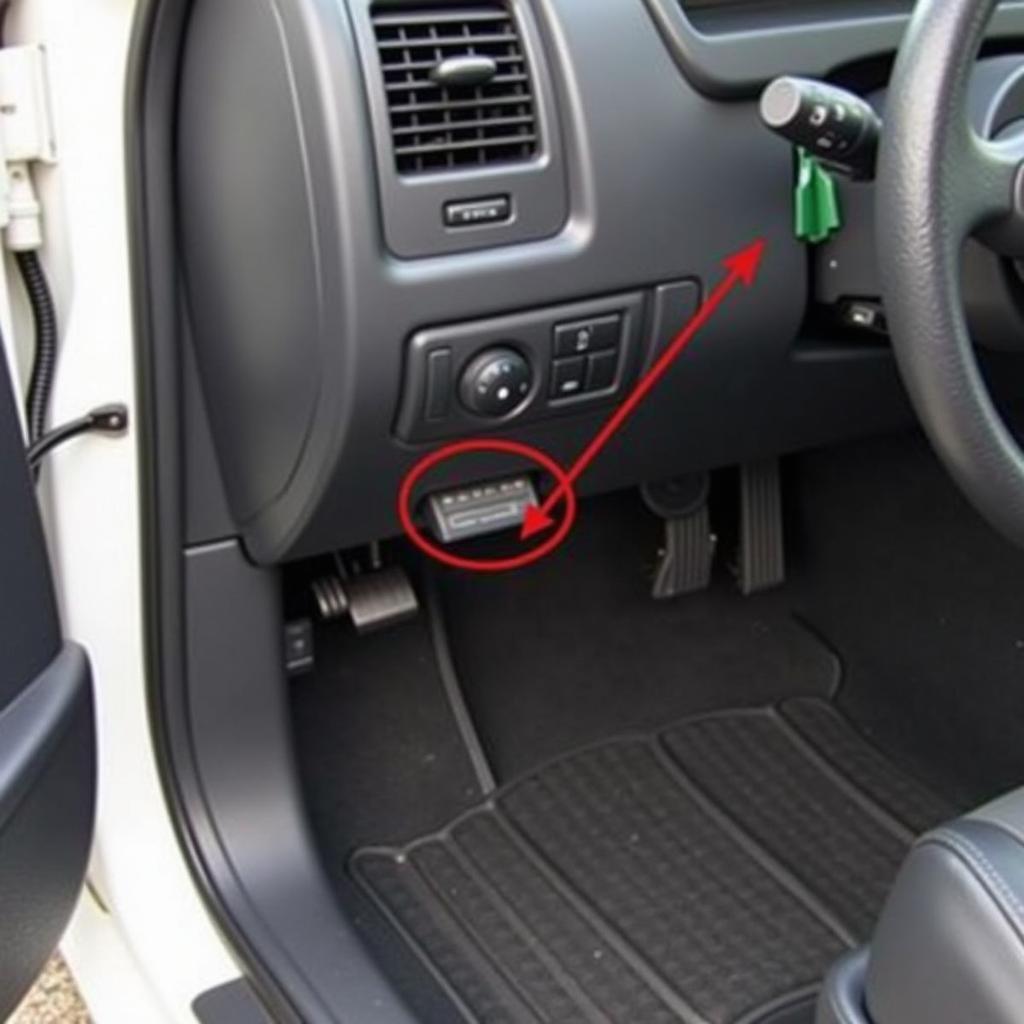A car diagnostic tool is an essential piece of equipment used to identify problems within a vehicle’s various systems. From checking engine performance to diagnosing transmission issues, these tools provide valuable insights into a car’s health, allowing for quicker and more accurate repairs. Whether you’re a professional mechanic or a DIY enthusiast, understanding what a car diagnostic tool is and how it works can save you time and money.
Are you constantly battling mysterious car troubles? Tired of costly guesswork at the repair shop? A car diagnostic tool, like the topdon professional car diagnostic tool, can empower you to pinpoint the root cause of automotive issues. These tools, ranging from simple code readers to advanced scan tools, interface with your vehicle’s onboard computer to retrieve diagnostic trouble codes (DTCs). These codes act as clues, pointing towards specific malfunctions within the engine, transmission, brakes, and other critical systems.
Types of Car Diagnostic Tools
Car diagnostic tools come in various shapes and sizes, each with its own set of capabilities. Understanding the different types can help you choose the right tool for your needs.
Basic Code Readers
Basic code readers are entry-level tools primarily designed to retrieve DTCs. They are a cost-effective option for DIYers looking to understand basic engine problems.
OBD2 Scanners
OBD2 scanners offer more advanced functionalities than basic code readers. They can access live data streams, allowing you to monitor various sensor readings in real-time. This helps in identifying intermittent issues that might not trigger a DTC. Some popular choices include the elm327 bluetooth obd2 car diagnostic scanner tool and the bluetooth obd2 car diagnostic interface tool.
Professional Scan Tools
Professional scan tools are used by mechanics and technicians in repair shops. They provide comprehensive diagnostic capabilities, including bi-directional control, which allows you to activate certain components for testing purposes. The snap on professional car scan tool is a well-known example in the professional field.
 Types of Car Diagnostic Tools
Types of Car Diagnostic Tools
How Does a Car Diagnostic Tool Work?
A car diagnostic tool connects to the vehicle’s OBD-II port, typically located under the dashboard. Once connected, it communicates with the vehicle’s onboard computer, requesting information about stored DTCs and live sensor data. The tool then displays this information on its screen, allowing the user to interpret the results.
Understanding Diagnostic Trouble Codes (DTCs)
DTCs are alphanumeric codes that represent specific malfunctions within the vehicle’s systems. Each code corresponds to a particular problem, such as a faulty sensor, a wiring issue, or a mechanical malfunction.
 OBD2 Port Location in a Car
OBD2 Port Location in a Car
Benefits of Using a Car Diagnostic Tool
Using a car diagnostic tool offers numerous advantages, whether you’re a professional mechanic or a car owner.
- Faster Diagnosis: Quickly pinpoint the source of car problems, saving valuable time.
- Cost Savings: Avoid unnecessary repairs by accurately identifying the faulty component.
- Improved Maintenance: Monitor your vehicle’s health and address potential issues before they escalate.
- Empowerment: Gain a deeper understanding of your car’s systems and how they work.
Choosing the Right Car Diagnostic Tool
Choosing the right car diagnostic tool depends on your individual needs and technical expertise. Consider factors like budget, functionality, and ease of use. For commercial drivers, tools like the ima career driver tool offer specific functionalities tailored to their needs.
What is the Purpose of a Diagnostic Tool in a Car?
Diagnostic tools help pinpoint the issues within your car’s system, saving time and potentially a lot of money on repairs.
How to Use a Car Diagnostic Tool?
Connect the tool to your car’s OBD-II port and follow the manufacturer’s instructions to retrieve and interpret DTCs.
 Using a Car Diagnostic Tool
Using a Car Diagnostic Tool
Conclusion
A car diagnostic tool is a valuable asset for anyone who owns or works on cars. From simple code readers to advanced scan tools, these devices provide invaluable insights into a vehicle’s health, enabling faster diagnostics, cost savings, and improved maintenance. By understanding what a car diagnostic tool is and how it works, you can take control of your car’s maintenance and avoid costly surprises down the road.
FAQ
- What does a car diagnostic tool do? It reads diagnostic trouble codes (DTCs) and live data from a vehicle’s onboard computer to identify problems.
- Where is the OBD2 port located? It’s typically found under the dashboard on the driver’s side.
- What is a DTC? A Diagnostic Trouble Code, representing a specific malfunction within the car’s systems.
- Do I need a professional scan tool? It depends on your needs. Basic code readers are sufficient for DIYers, while professionals need more advanced tools.
- Are car diagnostic tools expensive? Prices vary depending on functionality, ranging from affordable code readers to high-end professional scan tools.
- Can I use a car diagnostic tool on any car? Most modern cars (post-1996) are equipped with an OBD-II port, making them compatible with most diagnostic tools.
- How often should I use a car diagnostic tool? Periodically, or whenever you suspect a problem with your vehicle.
Need further assistance? Contact us via WhatsApp: +1(641)206-8880, Email: [email protected] or visit us at 910 Cedar Lane, Chicago, IL 60605, USA. We have a 24/7 customer support team ready to help.

Leave a Reply